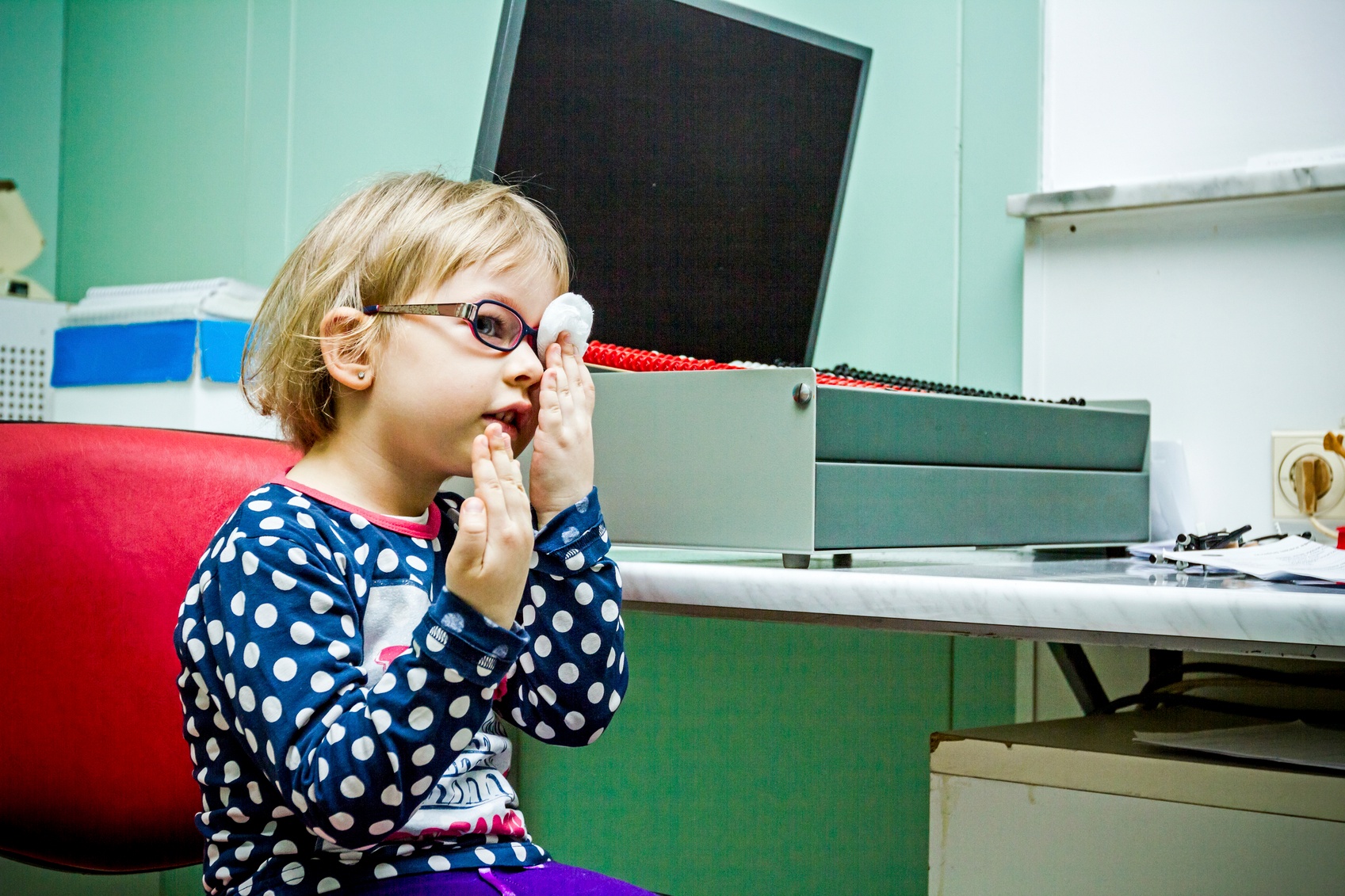Why Getting an Annual Eye Exam Is Becoming Even More Critical
You eat right, see your doctor for a wellness check every year, and go to the dentist to keep your teeth bright, sparkling and cavity free.
But what about your eyes and an annual eye exam? You may think your eyesight is just fine, but is it?
Maintaining and improving your eyesight is important. According to the Centers for Disease Control and Prevention, 11 million people in the U.S. over age 12 need vision correction.
But that’s just one reason to get your eyes checked. Annual eye exams are important for early detection of eye diseases no matter your age.
Only Your Eye Doctor Knows the Real Story About Your Vision
Eye diseases are common, but they can go unnoticed for a long time because some present with no symptoms—at first. A comprehensive dilated eye exam by an optometrist (eye doctor) is imperative to find eye diseases in their early stages when treatment is most effective.
During the exam, your eye doctor may perform the following:
- A visual acuity test to assess how clearly you see
- A refractive assessment if you’re not seeing clearly
- A visual field test to measure the total extent of what you can see to the sides without moving your eyes (peripheral vision)
- A slit-lamp exam to examine the eyelids, lashes, cornea, iris, lens and fluid chamber between your cornea and iris
- A retinal exam to evaluate the back of your eye, including the retina, the optic disk and the underlying layer of blood vessels that nourishes the retina
- Glaucoma screening to measure the pressure in your eye
An eye exam can even detect some health problems like diabetes or high blood pressure before your primary care doctor.
Keep Your Vision With Early Detection
.png?width=300&name=annual-eye-exam%20(1).png) Don’t risk your vision and become a statistic: Of the estimated 61 million American adults at high risk for vision loss, only half have visited an eye doctor in the past year. Regular eye care can have a life-changing impact by preserving your vision.
Don’t risk your vision and become a statistic: Of the estimated 61 million American adults at high risk for vision loss, only half have visited an eye doctor in the past year. Regular eye care can have a life-changing impact by preserving your vision.
Early detection and treatment are critical to prevent permanent vision loss or blindness caused by common eye diseases like:
- Cataracts, a clouding of the lens that is the leading cause of vision loss in the U.S.
- Diabetic retinopathy, which causes damage to blood vessels in the back of the eye. This is the leading cause of blindness in American adults.
- Glaucoma, a group of diseases that damages the optic nerve.
- Age-related macular degeneration, a gradual breakdown of light-sensitive tissue in the eye.
The Myopia Epidemic
Another reason for an annual eye exam is what eye doctors term the “myopia epidemic” because the nearsighted population has increased by 14 percent in the U.S. and almost 15 percent in western Europe since 2000.
Over 32 percent of the world’s population has myopia, or nearsightedness, says a 2019 study in the journal Investigative Ophthalmology and Visual Science. It’s predicted that by 2050, almost 60 percent of the people in the world will have some level of myopia, mostly those living in developed countries.
Myopia is the elongation of the eyeball, which leads to blurred vision when viewing objects that are far away. It tends to develop in childhood, and most myopic children are diagnosed between the ages of 3 and 12, says the American Optometric Association.
Recent studies have discovered that myopia greatly increases the chances of developing debilitating diseases like cataracts, glaucoma, myopic maculopathy and retinal detachment—and some of these conditions can lead to blindness.
Myopia has no cure. Glasses, contact lenses and LASIK surgery can correct vision but can’t reverse eyeball elongation. There has been a recent increase in the frequency of diagnosis at all levels.
Why?
In children, a common culprit for the increase in myopia is something you have probably guessed: screen time. Four in five parents say their children spend at least an hour a day in front of a computer or mobile device, according to a 2018 American Optometric Association study.
This study argues that parents tend to greatly underestimate how much screen time their school-age child is actually getting and that the constant up-close interactions may be leading to a permanent elongation of the eye.
In adults, screen time is again the culprit, but myopia may also develop in adults as a result of significant health issues like diabetes.
Watch for these symptoms, says the Mayo Clinic, and then visit your eye doctor for a thorough exam if you experience:
- blurry vision when looking at distant objects,
- squinting and/or partially closing your eyelids to see more clearly,
- headaches,
- lack of awareness of distant objects,
- excessive blinking,
- rubbing your eyes frequently, or
- difficulty seeing when driving a vehicle, especially at night.
Everyone, Including Children, Needs an Annual Eye Exam
Although people tend to have more vision problems as they age, children need eye exams to ensure healthy vision.
But less than 15 percent of preschool children get an eye exam, and less than 22 percent receive vision screening, according to the Centers for Disease Control and Prevention (CDC).
While vision screening can detect a possible vision problem, it can’t diagnose it. A comprehensive dilated eye exam is the only thing that can diagnose eye disease.
Amblyopia (reduced vision because the eye and brain aren’t working together properly) is the most common cause of vision loss in children, affecting roughly 2 to 3 percent of children. Amblyopia needs to be treated promptly to help avoid vision loss. It is difficult to treat in adults, and it can’t be corrected with glasses or contact lenses. Early detection and treatment of potential eye issues and disease, including amblyopia, are important to maintain your child’s vision.
If You or Your Child Have Any of These Symptoms, Schedule an Appointment to See Your Eye Doctor Right Away
Annual vision exams are important, but if you have any of the following eye problems, don’t wait for your next appointment—call your eye doctor immediately:
- Decreased vision
- Draining or redness of the eye
- Eye pain
- Double vision
- Floaters (tiny specks that appear to float before your eyes)
- Circles (halos) around lights
- Flashes of light
Schedule Your Annual Eye Exam Now With Vision Source Plano
At Vision Source Plano, our individualized approach to optometry makes Dr. Malone and staff the eye and vision care providers of choice in the Plano area. We offer the following services:
- Complete eye exams
- Contact lenses and glasses
- Glaucoma testing
- Pre/post-operative care
- Dry eye treatment and diagnosis
We also work with other practitioners in the control and treatment of diabetic eye disease.
We offer financing options and work with your vision insurance provider to ensure the best in eye health and vision care.
For a complete list of services, visit our services page or call our Plano office at (972) 612-2099.
At Vision Source Plano, we are dedicated to providing high-quality optometry services in a comfortable environment.
Call us at (972) 612-2099, or schedule an appointment online today.
Disclaimer: The content on this blog is not intended to be a substitute for professional medical advice, diagnosis, or treatment. Always seek the advice of qualified health providers with questions you may have regarding medical conditions.








